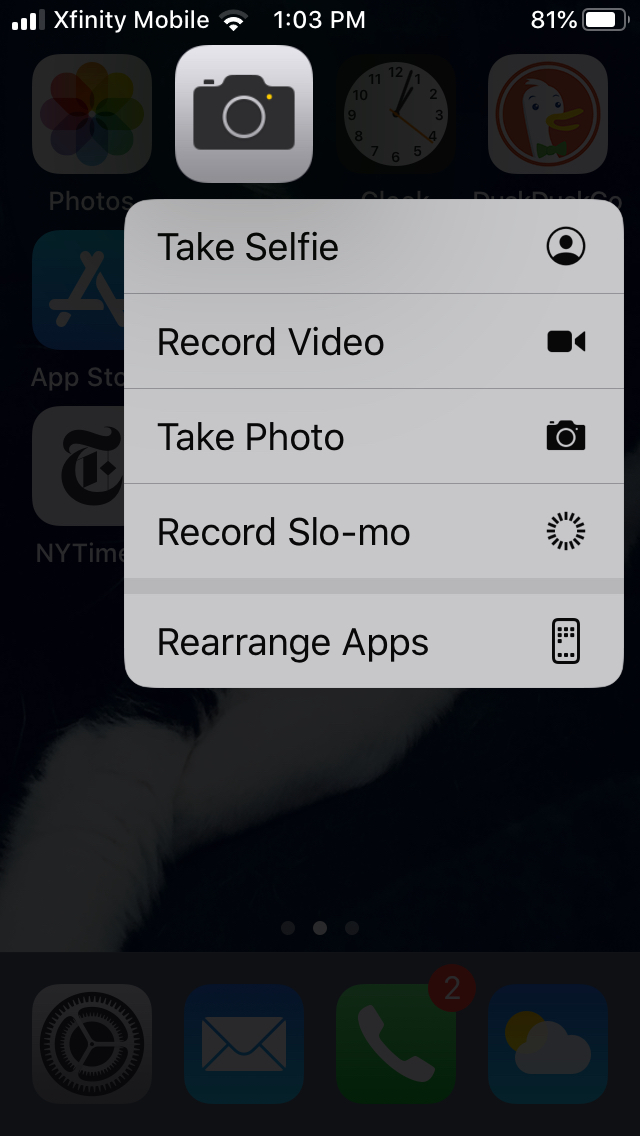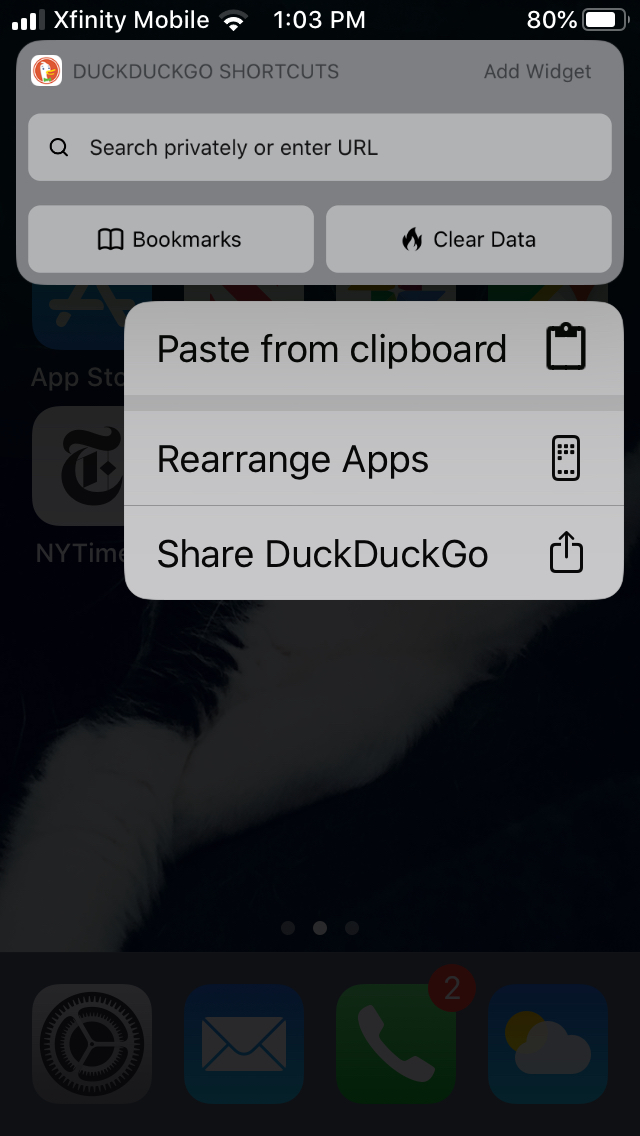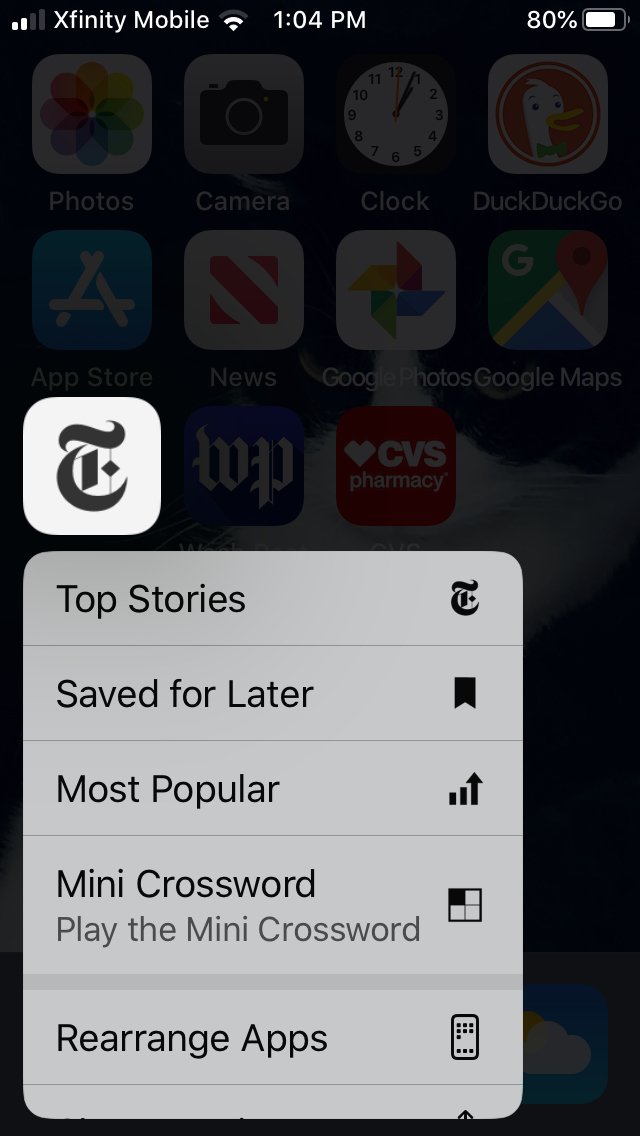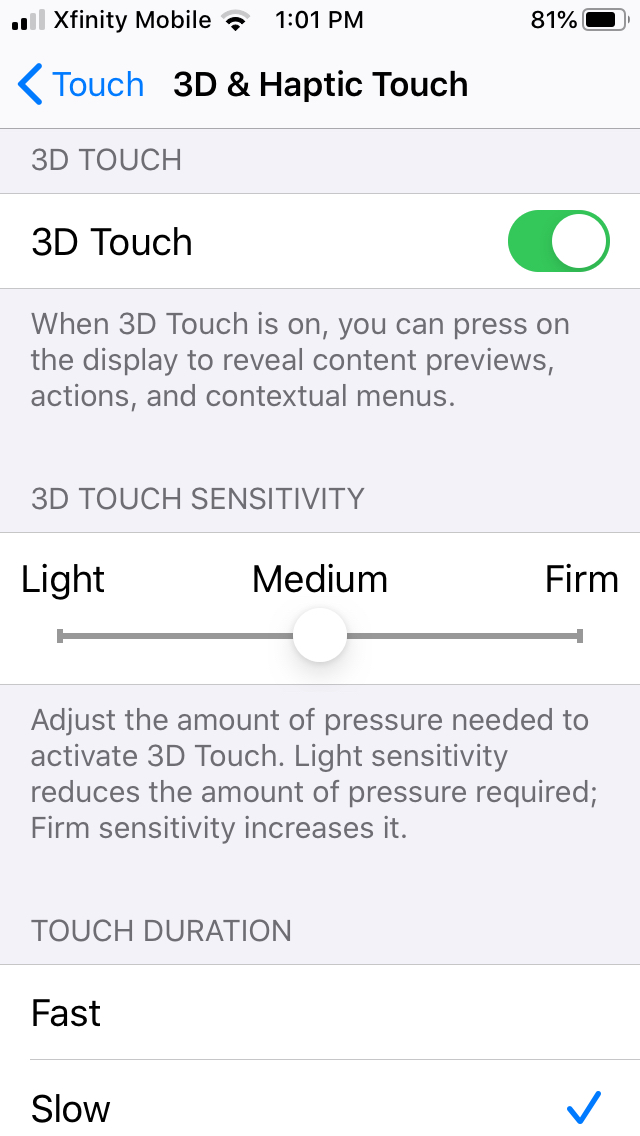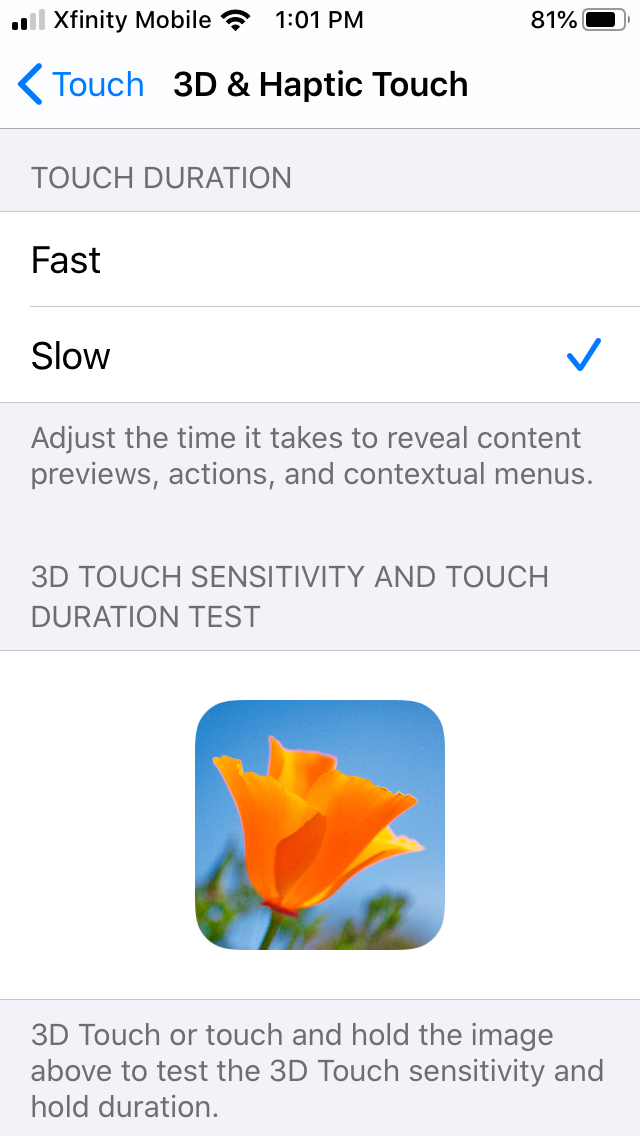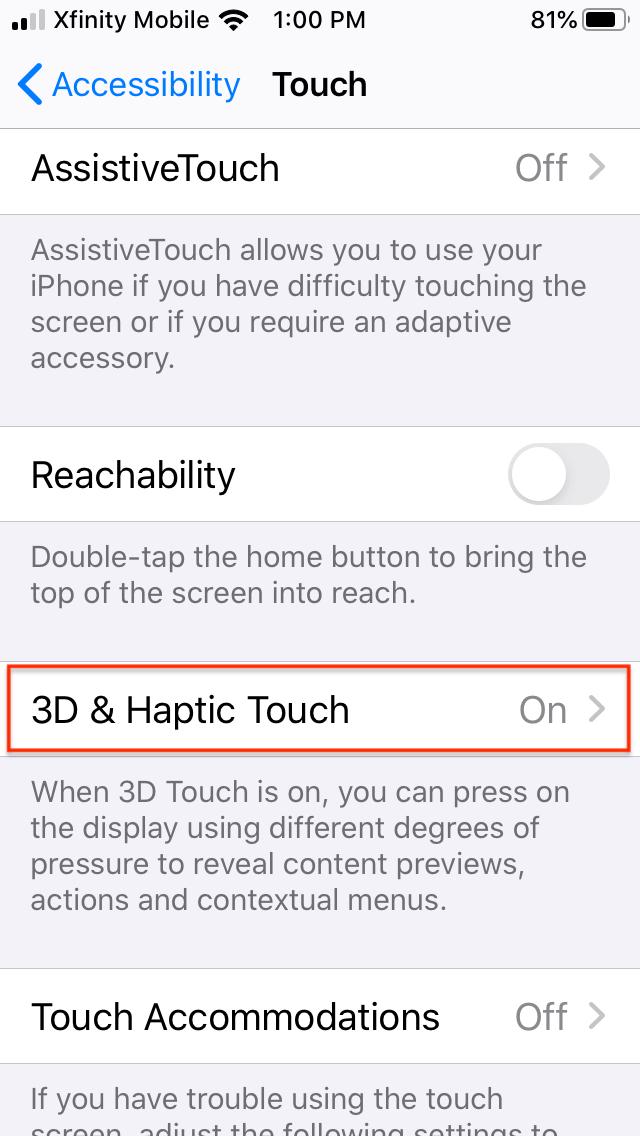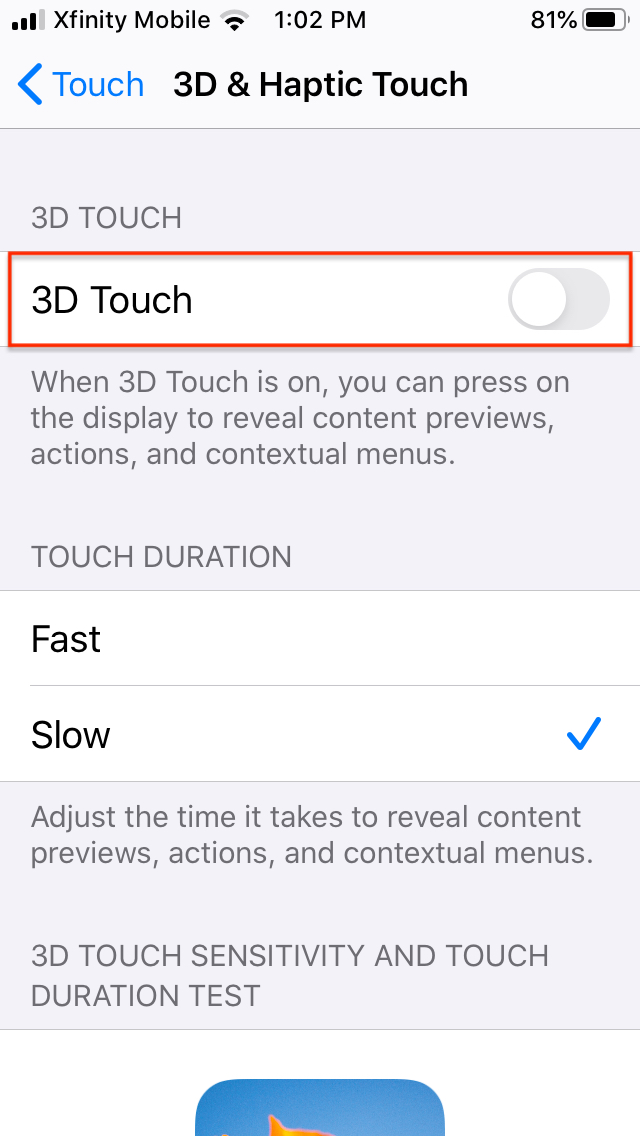In 2015, when Apple launched the iPhone 6S, it also debuted a new iOS interface called 3D Touch. This feature uses the iPhone’s pressure-sensitive surface to help you view, navigate, and control some aspects of the device’s apps and features. You could use it to call up an app’s Quick Actions, preview notifications, operate actions from the Control Center, and “peek and pop” with certain apps without having to launch them.
3D Touch was used in the iPhone 6S, 7, 8, X, and XS models before being replaced by Haptic Touch, which responds only to a finger press’s length. While some people could use 3D Touch to their advantage and profoundly miss it, others found it unintuitive at best and annoying at worst. This article explains how to disable 3D Touch on iPhones that have it and disable Haptic Touch.
How to disable 3D Touch and Haptic Touch
Regardless of whether the touch response is 3D or haptic, some people hate both equally and could never find or get the hang of the feature’s light-medium-firm press subtlety or did not find the results edifying. If that’s you, there is a way to rid your phone of its constant responses to the pressure of your errant fingers.
Here’s how you switch off 3D Touch.
- Open the Settings app.
- Tap on Accessibility.
- Tap on Touch.
- Tap on 3D & Haptic Touch.
- Toggle 3D Touch off.
Once disabled, you will no longer be bothered by a vibrating phone every time you happen to touch the glass or the alerts and menus that may accompany it, depending on where you pressed. You can handle your phone to your heart’s content without triggering any unexpected actions.
When it comes to Haptic Touch, it isn’t actually possible to turn this feature off completely. However, you can change Haptic Touch’s sensitivity so that Haptic Touch functions aren’t triggered quickly. Here’s how you do it:
- Open the Settings app.
- Tap on Accessibility.
- Tap on Touch.
- Tap on 3D & Haptic Touch (or Haptic Touch if you have a Haptic Touch-only iPhone).
- Tap Slow under Touch Duration.
Doing this will mean that you have to press down on the screen longer to trigger Haptic Touch. This may help you avoid accidentally activating it, which can sometimes be annoying.
The difference between 3D Touch and Haptic Touch
iOS 13 has ditched the 3D Touch feature and replaced it with something that feels somewhat similar — Haptic Touch. Both options are stunning tech advances that make iPhone usage easier for most users, but they function a little differently.
The difference between 3D Touch and Haptic Touch is that the former responds to different pressure levels with various responses and features. If you press harder on an icon using a 3D Touch screen, new menus pop up.
Haptic Touch, on the other hand, does not distinguish between the force or intensity of pressure. Rather, it tracks the length of a finger press. Haptic Touch is basically a long finger press and vibration. This call and response depend on the pressure sensitivity built into the iPhone screen.
You’ll receive either one option or both of them, depending on what type of iPhone model you own. Remember that 3D Touch is a hardware-based feature. Because of this, it needs a unique, pressure-sensitive screen to work correctly. On the contrary, Haptic Touch is software-based and can operate on devices no matter if they have the correct sensitive screen hardware or not.
For example, the latest and greatest iPhone 11 and iPhone 11 Pro utilize Haptic Touch rather than 3D Touch. The iPhone XR uses haptic feedback, including a faint vibration immediately following a long press on the screen. Fortunately, you can still find the 3D Touch innovation on earlier iPhone models that offer touch-sensitive screens.
The convenience and performance of these features are deeply personal, which is why we highly recommend disabling 3D and Haptic Touch. After doing this, we promise you’ll feel freer to personalize your iOS device fully. Plenty of Apple device owners do not encounter any issues with these features regularly, so it’s not a disastrous problem at the end of the day. Still, we’ve noticed several complaints about the slowness and inconvenient functionality with touch screens on certain models. Unfortunately, if your Apple product did not initially come with 3D Touch hardware downloaded, you won’t be able to install it on your device.
Editors' Recommendations
- A big iPhone update is right around the corner
- Are you having iPhone alarm problems? A fix is coming soon
- 10 iPhone productivity apps you need to download right now
- When will Apple release iOS 18? Here’s what we know
- Everything you need to know about the massive Apple App Store outage
